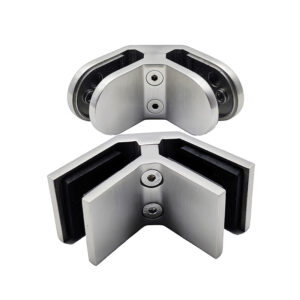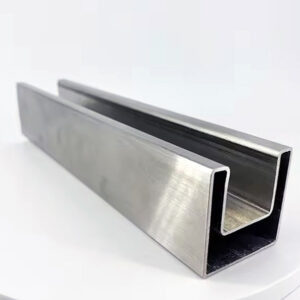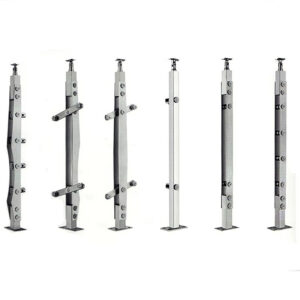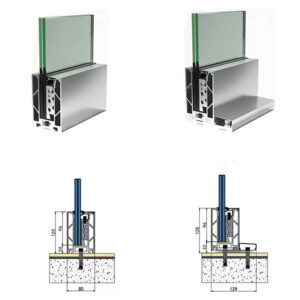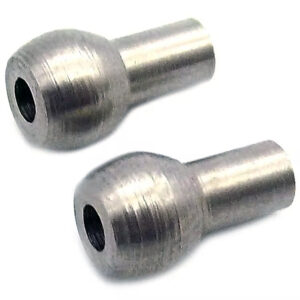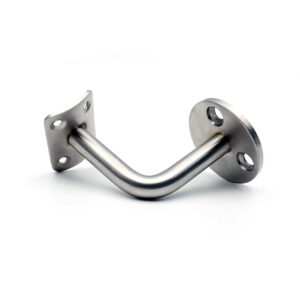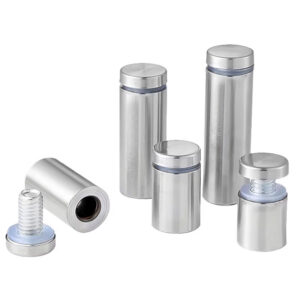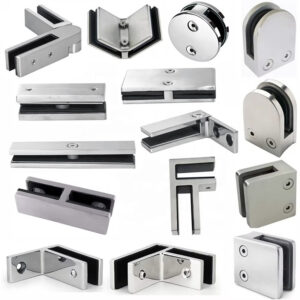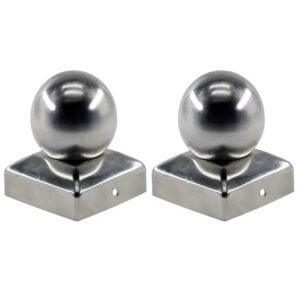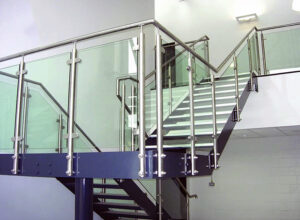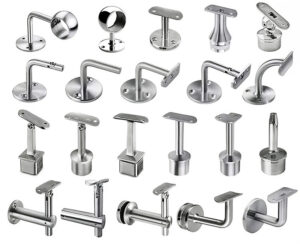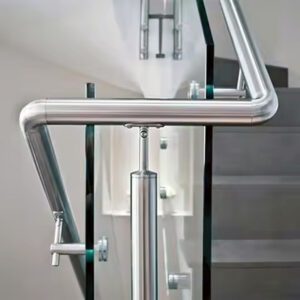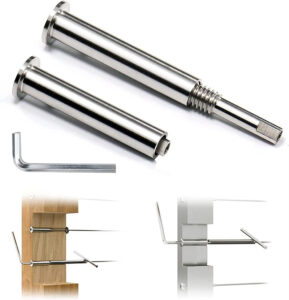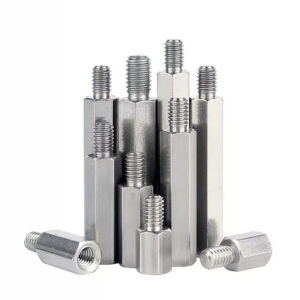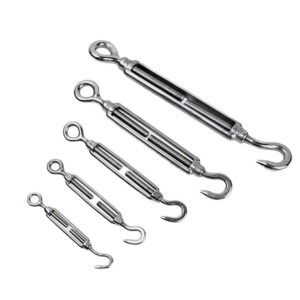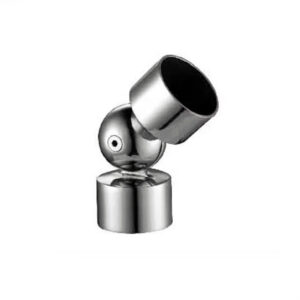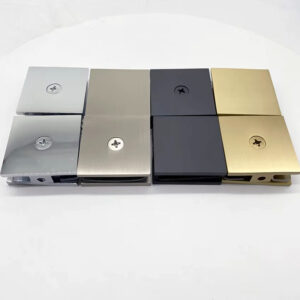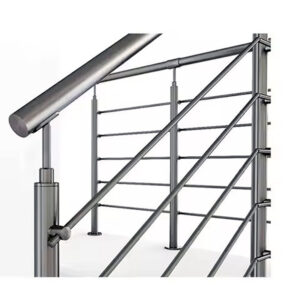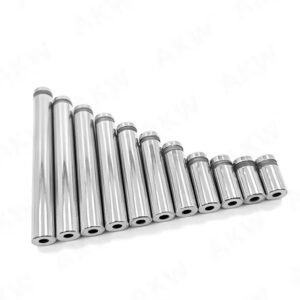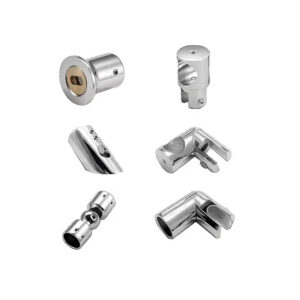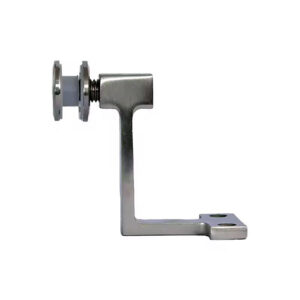Finding reliable commercial building railings that meet codes, install efficiently, and deliver long-term performance shouldn’t be a gamble. After 23 years in stainless steel manufacturing, we’ve learned that contractors and distributors need systems that work as promised—standard connections that fit, materials that last, and support when problems arise. This guide covers what actually matters: proven hardware solutions, realistic installation timelines, and performance you can count on.
Comprehensive Railing Systems & Components
Handrail Systems
Our commercial building railings start with wall-mounted and post-mounted handrail systems designed for consistent installation. Wall brackets accommodate standard stud spacing with adjustable mounting points. Post-mounted systems integrate with stainless steel posts from 38mm to 50.8mm diameter, supporting spans up to 3 meters between supports.
Surface-mounted continuous handrails work with existing structures, eliminating demolition costs. Each system includes pre-drilled mounting hardware, gaskets for weather sealing, and standard fastener packages that reduce field assembly time.
Precision Commercial Building Components
Railing posts form the backbone of commercial building systems. Our 304 and 316L stainless steel posts handle structural loads while maintaining dimensional consistency. Square posts (40x40mm to 60x60mm) and round posts (38mm to 76mm diameter) accommodate different architectural requirements.
Glass railing hardware includes structural glazing clamps, point-fixed spigots, and continuous support systems. Clamps accommodate 12-19mm glass thicknesses with adjustment ranges for field conditions. Base shoes provide structural connection to concrete or steel substrates with engineered load transfer.
Cable railing systems feature through-post hardware, surface-mounted tracks, and tensioning systems that maintain cable alignment. Stainless steel cables meet AISI 316 specifications for corrosion resistance, with tensioners designed for field adjustment and long-term stability.
Material Selection for Commercial Applications
304 Stainless Steel: Interior applications, standard atmospheric exposure, cost-effective baseline performance. Typical service life 15-20 years in controlled environments.
316L Stainless Steel: Coastal areas, industrial environments, enhanced corrosion resistance. Commercial building fabrication 316L provides superior performance in harsh conditions with 25+ year service expectations.
Surface finishes include brushed (#4 finish) for high-traffic areas and mirror polish for architectural emphasis. Brushed surfaces hide minor scratches and maintain appearance with standard cleaning. Mirror polish requires more maintenance but provides premium appearance for lobby and entrance applications.
| Material Grade | Environment | Expected Service Life | Cost Factor |
|---|---|---|---|
| 304 Brushed | Interior/Standard | 15-20 years | 1.0x |
| 304 Mirror | Interior/Premium | 15-20 years | 1.2x |
| 316L Brushed | Coastal/Industrial | 25+ years | 1.4x |
| 316L Mirror | Coastal/Premium | 25+ years | 1.6x |
Technical Specifications for Real Applications
Performance data based on 23 years of manufacturing experience and field testing:
| Component Type | Load Capacity | Installation Time | Maintenance Interval |
|---|---|---|---|
| Wall Handrails | 890N concentrated load | 15-20 min/meter | Annual inspection |
| Post Systems | 1.5kN horizontal | 45-60 min/post | 2-year detailed check |
| Glass Clamps | 2.4kN ultimate | 8-12 min/connection | 6-month seal check |
| Cable Systems | 1.8kN tension | 25-30 min/bay | Annual tension check |
Load ratings meet IBC and OSHA requirements with safety factors appropriate for commercial applications. Installation times assume standard tools and experienced crews working with modular components.
Proven Applications Across Commercial Projects
Multi-Unit Residential Projects
Standardized commercial building railings reduce costs through repetitive installation. Our modular systems cut field assembly time by 35% compared to custom fabrication. Standard connection details eliminate field welding for interior applications, reducing fire watch requirements and schedule delays.
“Modular railing systems reduced our installation time by 40% while maintaining consistent quality across 180 units.” —Multi-Family Construction Association
Recent 240-unit project used 316L components for balcony railings with glass infill. Standard post spacing (1.8m centers) and pre-fabricated rail sections enabled two-person installation crews to complete 8-10 units per day.
Commercial Office Buildings
Office environments require railings that balance safety compliance with architectural appeal. Our custom commercial building railings integrate with HVAC, lighting, and structural systems through coordinated mounting details.
15-story office complex used combination glass and cable systems for atrium stairs. Structural glazing eliminated intermediate posts, maintaining sight lines while meeting 200-pound concentrated load requirements per IBC Section 1607.8.1.
Industrial & Manufacturing Facilities
Heavy-duty applications demand commercial building systems engineered for equipment loads and operational requirements. 316L stainless steel components resist chemical exposure and temperature cycling common in industrial environments.
Process facility installation included elevated walkways with 60kg/m² live loads plus equipment loads. Continuous handrails with expansion joints accommodated thermal movement while maintaining structural integrity.
| Project Type | Typical Components | Material Choice | Key Benefits |
|---|---|---|---|
| Residential | Posts, Glass, Cables | 304 Standard | Cost efficiency, fast install |
| Office/Retail | Custom Rails, Glass | 304/316L Mix | Architectural integration |
| Industrial | Heavy Posts, Continuous Rails | 316L Required | Chemical/thermal resistance |
| Coastal | All Components | 316L Mandatory | Corrosion performance |
Marine & Coastal Applications
Salt air and moisture demand ODM commercial railing manufacturing with enhanced corrosion resistance. Our 316L systems maintain structural performance and appearance in challenging coastal environments.
Oceanfront resort project specified 316L throughout with mirror polish handrails and brushed posts. After 8 years of service, annual inspections show minimal corrosion with standard maintenance protocols.
“316L stainless steel railings maintained structural integrity and appearance through multiple hurricane seasons.” —Coastal Engineering Institute
Installation Support & System Integration
Modular Design Advantages
Pre-fabricated components arrive ready for installation with minimal field modification. Standard connections use common tools and fasteners, reducing specialty equipment requirements. Component compatibility across product lines enables field substitutions when project conditions change.
Installation crews report 25-30% time savings using modular systems versus traditional stick-built approaches. Reduced field welding eliminates hot work permits for many applications, streamlining project scheduling.
Quality Control in Manufacturing
23 years of precision manufacturing ensures components meet dimensional tolerances critical for field assembly. CNC machining maintains hole patterns within ±0.5mm accuracy. Welded joints receive 100% visual inspection plus sample destructive testing for structural connections.
Material certifications accompany each shipment with mill test certificates for stainless steel grades. Surface finish consistency meets ASTM A480 standards for commercial applications.
Technical Support Through Project Lifecycle
Pre-construction support includes connection detail review, load calculations, and specification development. During installation, technical assistance addresses field conditions and integration challenges.
Post-installation support covers maintenance recommendations, inspection protocols, and component replacement planning. Our experience with thousands of installations provides practical guidance for long-term performance optimization.
| Installation Phase | Support Provided | Timeline |
|---|---|---|
| Design Development | Connection details, specs | 2-3 weeks |
| Pre-construction | Shop drawings, materials | 4-6 weeks |
| Installation | Field support, troubleshooting | Real-time |
| Post-completion | Maintenance guidance | Ongoing |
Frequently Asked Questions
How do I select between 304 and 316L stainless steel for commercial projects?
Use 304 for interior applications and standard atmospheric exposure within 5 miles of coastline. Specify 316L for coastal locations, industrial environments, or where enhanced corrosion resistance justifies additional cost. Marine applications require 316L mandatory.
What’s realistic installation time for modular railing systems?
Experienced crews typically install wall-mounted handrails at 15-20 minutes per linear meter. Post-mounted systems require 45-60 minutes per post including anchoring. Glass panel installation adds 10-15 minutes per panel for clamp connections.
How do modular components handle field variations in construction?
Adjustable connections accommodate ±12mm variations in post spacing and ±6mm height differences. Slotted mounting plates, telescoping components, and field-adjustable brackets handle typical construction tolerances without custom modifications.
What maintenance do stainless steel railings require?
Annual cleaning with mild detergent and water maintains appearance. Coastal installations need quarterly cleaning to remove salt deposits. Mechanical connections require inspection every 2 years. Surface scratches on brushed finishes blend with standard cleaning; mirror finishes may need professional restoration.
Can components from different manufacturers integrate with your systems?
Our standard connection details accommodate common industry dimensions. Post diameters, rail profiles, and mounting patterns follow established practices for compatibility. Specific integration questions require technical review of existing components.
What’s the supply chain reality for commercial projects?
Standard components ship within 2-3 weeks. Custom configurations require 4-6 weeks depending on complexity. We maintain inventory of common components to support distributor stock and emergency replacements. Large projects benefit from staged delivery coordination.
Competitive Analysis & Selection Criteria
| Manufacturer Type | Strengths | Best Applications | Considerations |
|---|---|---|---|
| Esang Metal | 23-year experience, modular systems | Complex commercial projects | Premium pricing for quality |
| Import Suppliers | Lower initial cost | Simple, high-volume projects | Quality consistency issues |
| Custom Fabricators | Unique designs | Architectural specialties | Extended lead times |
| Regional Suppliers | Local support | Standard applications | Limited product range |
Selection criteria should prioritize total project cost including installation time, long-term maintenance, and supply chain reliability. Our 23 years of manufacturing experience provides proven performance data for objective comparison.
“Total cost of ownership includes installation efficiency and maintenance requirements, not just initial component pricing.” —Commercial Construction Research Institute
Choose suppliers based on project complexity, performance requirements, and support needs. Simple applications may justify cost-focused selection. Complex projects benefit from experienced suppliers with comprehensive technical support and proven installation success.
Commercial building railings represent a critical safety and architectural element requiring careful supplier selection. Our modular approach, backed by 23 years of precision manufacturing, provides reliable solutions for contractors, distributors, and engineers who need systems that work as promised.
